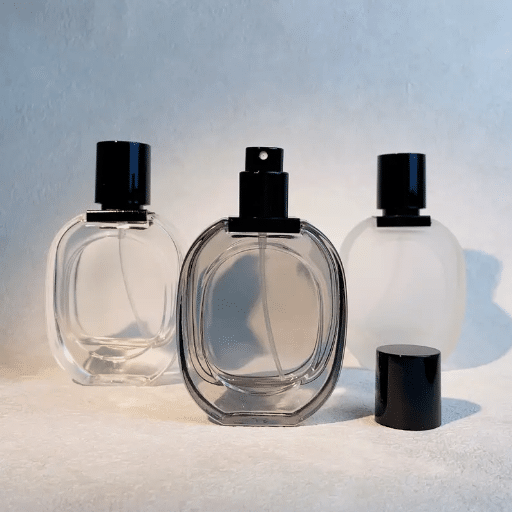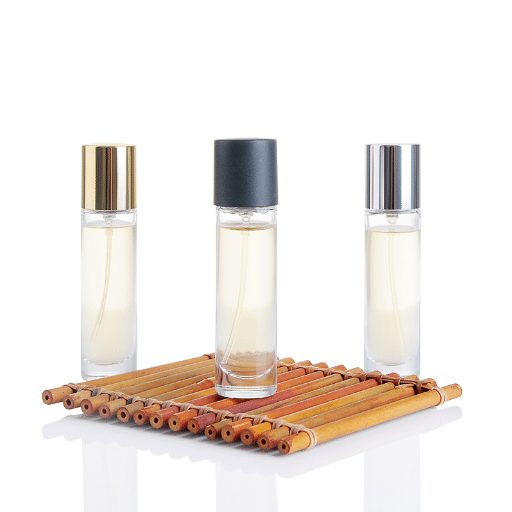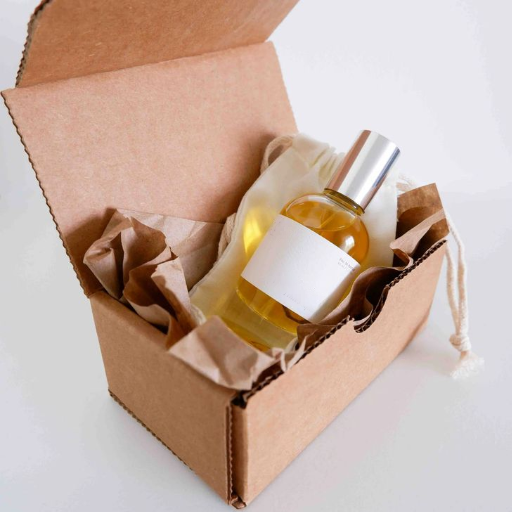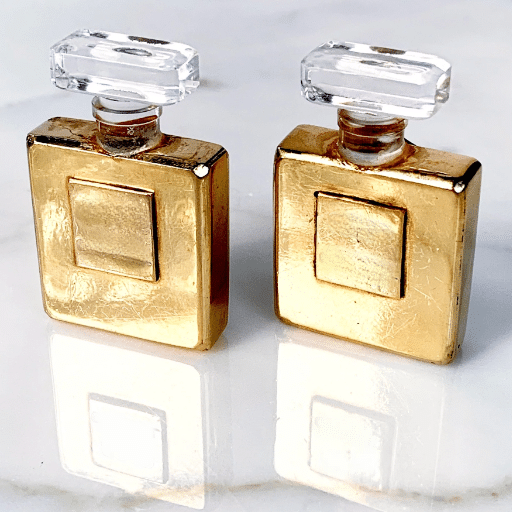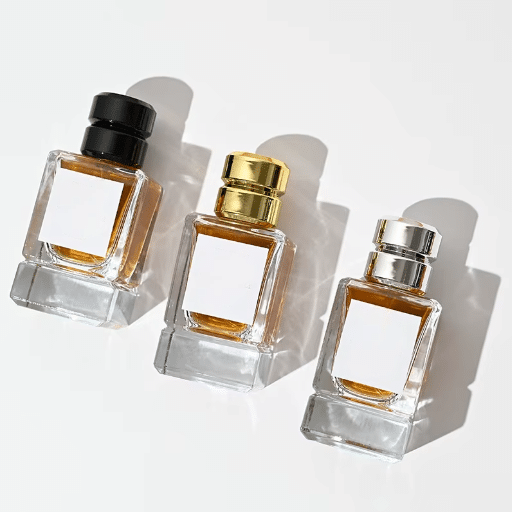No matter what people may think, it is the most minor things — like having the right bottleneck in the design of your perfume bottle — that are responsible for a delightful fragrance experience. Regardless of whether one is a brand owner, a packaging enthusiast, or simply curious about how his/her favorite scents come to life, having a clear understanding of bottle neck sizes and threading compatibility is essential for both the functionality and the elegance of the fragrance product. This guide shows you the controls that govern the whole game of perfume bottle neck designs, why they make the most difference when it comes to getting the perfect match with caps and sprayers, and how these necks affect the overall user experience. Come with us as we delve into the elaborate exquisiteness of perfume packaging standards, and we will be your guides in that critical decision-making process while helping you avoid common errors.
Understanding Different Perfume Bottle Sizes

The standard for perfume bottles is usually in milliliters (ml) or fluid ounces (fl oz); standard sizes include 30ml, 50ml, and 100ml. These sizes are determined scientifically and reflect different personal requirements, such as where to store your small bottle or the availability of a larger one for your daily perfume dosages. Picking the bottle size should take into account the frequency of use, the number of fragrances you have, and how long it will take you to complete the product. The smaller sizes lend themselves well to sampling and portability of perfume; the larger bottles, on the other hand, are more cost-effective for everyday users.
Types of Perfume Bottle Sizes
|
Bottle Size (ml) |
Common Usage |
Portability |
Ideal For |
Longevity (Approx.) |
|---|---|---|---|---|
|
5-10ml |
Sample or tester |
Highly portable |
Trial or travel |
1-2 weeks (daily use) |
|
15-30ml |
Travel-friendly |
Easy to carry |
Occasional wear |
1-2 months |
|
50ml |
Standard size |
Moderate portability |
Regular use |
3-4 months |
|
75-100ml |
Cost-effective |
Less portable |
Daily wearers |
6-12 months |
|
150ml+ |
Bulk size |
Not portable |
Perfume enthusiasts |
Over a year |
Standard Measurements and Their Uses
Knowing the perfume measurements and standards would be a great help so that one can choose a direction towards the correct size based on their needs, lifestyle, and frequency of use. The smaller sizes, measuring 5-10ml, would be one of their best choices for those who might want to have a test first, or for those looking for a small bottle for their luggage or special events. These little scents typically last 1-2 weeks with daily use, making them the perfect choice for discovering new scents.
The 15-30ml vials are the best option for short trips or for those who want to use perfume occasionally; they offer a balance between portability and extended use, lasting 1-2 months depending on regularity. As for the 50ml size, it is the typical choice that satisfies those who still seek some portability and lasts 3-4 months on average.
If one is a heavy user and wants to put on perfume every day, the best option is the larger sizes, such as 75-100ml. Since they offer a good balance of price and quantity, one can expect the supplies to last 6-12 months under the classic application mode. For passionate souls or for the wearers of a single aroma, sizes greater than 150ml are the perfect match, as they not only offer a lot of perfume at a reasonable price but are also designed to last for more than a year. The size for you will be determined by your personal individual traits and how you like to be. And that will, in the end, be a sequence of household, a choice of habit, and a location for storage.
Standard Bottle Sizes in the Market
Perfume bottles come in a variety of sizes to meet different needs. These can range from travel-friendly options to long-term use sizes. The most frequently seen ones are:
- 5ml to 15ml: These little bottles are perfect as a tester, for travel, or for people who like to change their perfume often. Their small size is the key reason they are considered quite popular among users who are always on the go.
- 30 ml (1 oz): Most people buy this size because it is their favorite, and they consider themselves casual users. They get to enjoy both portability and long-lasting time since the product generally lasts for one to two months with regular usage.
- 50 ml (1.7 oz): The volume is very acceptable, the standard size in most cases, allowing the user to have a large quantity of perfume that can last for several months. As such, it is most commonly favored among users who like to experiment with different scents and want a variety on hand.
- 100 ml (3.4 oz): Individuals who wear perfume daily are likely to choose this size. The time one bottle lasts depends on how much spray the person uses and is usually between 6 and 12 months.
- 150ml and above: These large bottles target loyal users of a particular scent and thus provide long-term value, as the fragrance lasts for at least a year.
The Importance of Neck Size in Perfume Bottles
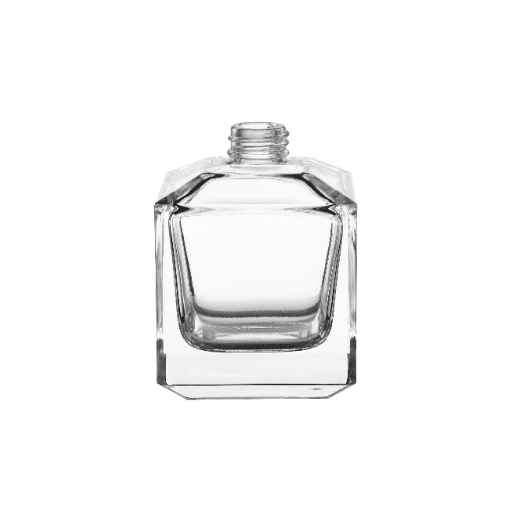
The neck size of a perfume bottle is one of the most essential parts, highly relevant to both functionality and user experience. A bottleneck of the right size will ensure the perfume comes out in a precise, uniform amount with each spray, reducing waste and ensuring consistent application. Besides, the neck size will determine whether the bottle is suitable for atomizers or pumps, which can directly affect the bottle’s ease of use. An effectively designed neck is also advantageous to end-users, as it prevents perfume from leaking and retains its scent by keeping the cap or seal very tightly, thereby minimizing air exposure.
Defining Neck Size and Its Impact
Neck size is essential not only for the functional aspect of the fragrance bottle, but also for its design aesthetic and compatibility with accessories, to a level of importance. In the larger context, industry standards for neck sizes allow manufacturers to produce all products with the same jug, while pumps, caps, and closures may be interchangeable. Size ranges like 15mm, 18mm, or 20mm are used to coordinate the neck diameter with the corresponding atomizers. Therefore, a perfectly selected neck size will be a supporting tool for proper product dispensing and, at the same time, point the consumer in the right direction when it comes to possible leakage or poorly sealed products. Moreover, the market trend suggests that brands will prioritize neck design to achieve multiple eco-friendly goals by reducing material waste. At the same time, user experience is the most critical.
How Neck Size Affects Compatibility
Containers with different neck sizes are not compatible with each other if their neck are not the same as that of the closure, spray, or pump supplied. If there is no compatibility, the result may be even the misuse of the dispensing system. On the other hand, strict control is maintained over neck sizes for pharmaceutical and cosmetic products to ensure the proper functioning of child-resistant caps or tamper-evident seals, which provide protection and safety for the products. Moreover, examples of neck sizes like 24/410 or 28/400 are intended to eliminate inefficiencies in production processes; hence, suppliers cannot find a better solution than the easy, flexible design that pairs containers with different closure options. This is just one of the possible methods for eliminating the need for customized components, which in turn reduces costs and lead times, and the recycling system will not have to cope with the discarded material.
Examples of Neck Sizes in Different Bottles
The packaging industry depends to a large extent on the gross neck measurements of bottles and closures, thereby ensuring the easiest fit when neck sizes are so-called. Notably, 24/410 and 28/400 are the most popular neck size standards, associated with personal care products like lotion and shampoo, and with beverages and household cleaning liquids, respectively. Smaller applications, such as travel-sized or essential oil bottles, may use neck sizes of 18/415. These measurements refer to the diameter and thread type for a perfect cap to prevent leakage or contamination. With the help of these standards, manufacturers will be able to produce more easily and faster, with greater efficiency, and keep up with market changes as well.
Neck Finishes and Their Variations

Neck finishes are primarily defined by their diameter and thread style, which are standardized for compatibility across containers and caps. The most common neck finishes include:
- Continuous Thread (CT): This is the most widely used type, as it shows a series of threads to help fasten the cover properly and safely. It is found in many food, beverage, and cosmetic containers.
- Snap-On: The Snap-On finish is commonly used on lightweight products, such as lotions or hand sanitizers, as it allows the caps to be simply snapped in.
- Dispensing Closures: Caps for dispensing closures, such as pumps, sprays, flip-tops, etc., are designed for use with liquid or viscous products, providing users with the required convenience.
Types of Neck Finishes Explained
|
Type of Neck Finish |
Description |
Common Uses |
Key Parameters |
|---|---|---|---|
|
Continuous Thread (CT) |
Spiral threads for screwing on closures |
Food jars, beverage bottles |
Easy to open and reseal |
|
Snap-On |
Simple neck for snap-fit closures |
Lightweight products like lotions |
No threading required |
|
Dispensing Closures |
Designed for pumps, sprays, or flip-tops |
Liquid/viscous product packaging |
Functional and ergonomic |
|
Roll-On (RO) |
Smooth finish with bead for roll-on fit |
Deodorants, roll-on applicators |
Precise dispensing system |
|
Crimp Finish |
Fits closures using crimping tools |
Aerosols, perfumes |
Airtight and secure seal |
|
Cork Finish |
Cylinder design for cork or stoppers |
Wine, spirits, specialty oils |
Traditional sealing style |
|
Pail Finish |
Large diameter neck with sturdy lid |
Industrial products, paints |
Heavy-duty and durable |
|
Bar Top Finish |
Short neck allowing bar-top closure |
Premium spirits, vinegar |
Elegant and reusable |
Crimp Neck vs. Other Finishes
When comparing crimp neck finishes with other types, their unique advantages become apparent, particularly in industries concentrating on product freshness and tamper resistance. Crimp neck designs are highly valued for their ability to create an airtight, secure seal ideal for pressurized products such as aerosols or high-end perfumes. In contrast to bar top finishes, crimp finishes prioritize functionality and product preservation over style and reusability.
On the other hand, Pail finishes target industrial applications by providing durable containers. In contrast, cork finishes are often chosen for beverages or specialty oils, giving off a sense of heritage and staying true to history. Each design has its unique functions; however, the crimp neck is the choice for applications that require a unique, high-sealing performance to prevent leakage or contamination. It is the same crimping function that makes crimp finishes a standard across multiple industrial and packaging sectors.
Choosing the Right Neck Finish for Your Perfume
When choosing the right neck finish for your perfume, you must consider several factors to ensure it is both functional and aesthetically pleasing. Screw finishes, for example, are the most widely used finishing style and remain the most sought-after choice for perfumes used frequently. The use of crimp finishes, on the other hand, has been commonplace in luxurious perfumes because it provides a tamper-evident solution while still maintaining an upscale, classy look. Along the same lines, an environmentally conscious society has forced the industry to go green, with manufacturers increasingly adopting eco-friendly materials such as recyclable aluminum and biodegradable plastics. By balancing convenience, fashion, and environmental friendliness, you can select the best neck finish that aligns with your brand’s identity and objectives.
Closure Types for Perfume Bottles
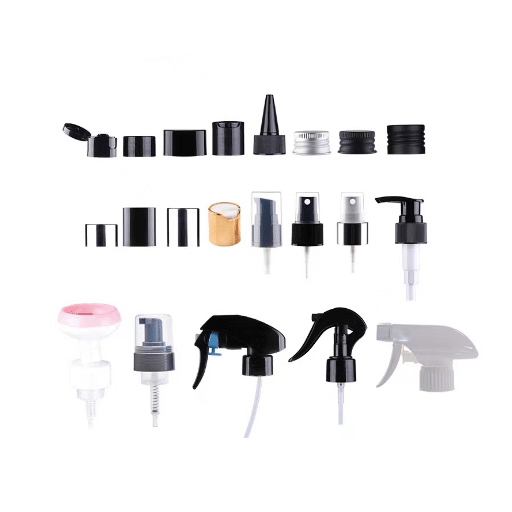
When selecting closure types for perfume bottles, there are several standard options to consider based on functionality and aesthetic preferences:
- Screw Caps
Screw caps have become a favorite due to their durability and reliable sealing. They are very easy to handle and are the usual choices for cheap or travel-sized perfumes. - Crimp Closures
Crimp closures provide a safe, tamper-proof seal. Frequently seen on premium fragrance bottles, these give a decent, professional look. - Snap-On Caps
The snap-on caps are very easy to apply and button up without any special skills; hence, they are efficient for mass-market perfumes. Their main feature is ease of use, without compromising quality. - Magnetic Closures
Magnetic closures are closely associated with high-end brands and offer a chic look as well as effortless opening and closing. - Pump Sprays
Pump sprays are the most common among modern perfumes, as they allow for a very uniform and controlled application of fragrance.
Overview of Caps and Closures
The crucial role of caps and closures in ensuring product protection, convenience, and brand representation cannot be overstated. The latest manufacturing technologies have made it not only very fast but also very creative to design a wide range of products. They provide an example of tamper-proof caps now being the norm across sectors, particularly food and drink and pharmaceuticals, as they are seen as enhancing consumer protection and trust. Environment-led sustainable closure solutions, the rise of biodegradables, and the introduction of refill stations are in line with the global push to reduce global plastic waste. Finally, capitals that can be ordered, customized to the brand they will represent, by the customer —e.g., unique shapes, colors, and finishes —are increasingly being requested. That way, the products will leave shelf competition, and the brand can be built up. These trends reflect the dynamic changes in the field of caps and closures as they strive to meet consumer expectations and industry requirements.
Roller Balls and Their Applications
Roller balls have been among the industry’s most critical components and have been widely used in the cosmetics, personal care, and pharmaceutical sectors, among others. The snugness and convenience, for which they are widely appreciated, enable liquids to be applied smoothly and with control, thus making them the most suitable for products like serums, essential oils, and roll-on deodorants.
The latest developments in roller ball technology mainly involve enhancing the user experience by means of using materials such as stainless steel and glass, which in turn provide both strength and cooling during the application process. In addition, the makers are increasingly turning to environmentalists by adopting recyclable materials and strictly using roller balls as one further step toward protecting the environment. By maintaining sanitation and allowing user movement, the roller balls remain among the top picks in customers’ searches for good, handy products across different fields. The ease of their employment and the trouble-free application process are clear signs that roller balls are among the most essential innovations in packaging today.
Dropper and Vial Options
Droppers and vials are the backbone of products such as pharmaceuticals, cosmetics, and essential oils, enabling accurate, controlled dispensing of liquids. The technology focuses on increasing user satisfaction by creating droppers with a volume scale, ensuring the correct dosage. In contrast, vials are now made with highly developed sealing technologies that preserve the contents and allow them to last longer. Eco-friendliness is another key aspect, and many makers have started introducing materials that can be recycled, such as those that enable the manufacture of BPA-free plastics, among others. Droppers and vials together made the perfect packaging, providing users with easily accessible, non-leaking, lightweight functionality without the need for traditional containers. The fact that they are getting better all the time spotlights these products’ importance for glue, liquid, and the environment, which are unsustainable in the packaging of the future.
Packaging Considerations for Glass Perfume Bottles
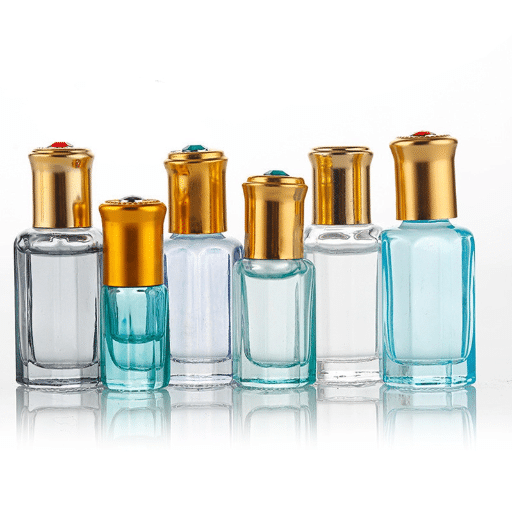
The creation of glass perfume bottles means that the myth of packing has to be very well. They are good-looking, long-lasting, and convenient. Transportation and storage are the stages where glass needs the most attention, and for this reason, cushioning materials such as foam inserts or molded pulp are the most popular choices. In addition, the outer packaging must be strong and primarily consist of materials such as cardboard or rigid boxes. On the other hand, it is through packaging design that the perfume brand and its distinctive elegance would impress consumers most. At the same time, the packing should be very convenient for users, including the opening and closing areas, which are securely fastened. Sustainable products, such as those made from recycled paper or biodegradable options, are a trend catching on because they are linked to and contribute to a company’s public image.
Refillable Options and Sustainability
The prevalence of refillable perfume bottles is increasing significantly in the perfume industry, and it is not just about convenience and environmental sustainability. Such systems allow customers to pour their pretty scents back in without the need to buy entirely new packages, making a massive cut in the waste produced by one-time-use perfume bottles. Nowadays, most brands, if not all, are already installing refill stations in their stores or providing customers with the tools needed to refill at home, thereby making the whole process greener and more sustainable. In recent times, more people have been seen to want sustainable products, and their number has increased considerably. The majority of people are now looking for products manufactured using environmentally responsible methods. By adopting the refillable design and incorporating natural materials, the brands are not only shrinking their eco-footprint but also aligning with the changing values of green-aware consumers.
Essential Oils and Packaging Requirements
Ensuring that essential oils are packed properly can go a long way toward safeguarding the product’s purity, quality, and compliance with norms. Because of their high concentration, essential oils can be easily damaged by light, heat, and air; thus, packaging in special materials is necessary. Among these materials, the most widely used are dark amber or cobalt blue glass bottles, which shield against ultraviolet rays and can help preserve oils’ potency over time. Moreover, leak-proof and precise dispensing are two additional functions enabled by features such as dropper or orifice-reducing security caps.
Meeting regulatory requirements is frequently of great importance, and the most immediate one is proper labeling, which must include the botanical name, country of origin, and usage instructions for the oil. Appropriate packaging not only guarantees the preservation of the product’s quality but also provides transparency and safety for consumers. One of the things that encourages the packaging sector is the continuously increasing number of brands that are now aware of environmental issues and have begun to examine the use of materials that can be returned to the environment with little or no harm, while also maintaining the necessary protective qualities. Thus, they align environmentally conscious values with packaging design and functionality.
Cosmetic Packaging Trends
A significant boost has been pushing the shift in cosmetic packaging toward the greenest, most minimalist designs possible. Shoppers today love the sustainable character, simplicity, and elegance of the new packaging. It might also be the majority taking up packaging made from bamboo and other biodegradable materials, as well as post-consumer recycled plastics. Also, operations in the packaging industry are more of a technical and aesthetic issue, since the introduction of concepts like refillable packaging, as well as environmental care, connects the designs with the green movement.
Technological developments in innovative packaging are transforming the cosmetic industry. QR codes, NFC tags, and augmented reality are becoming part of the packaging system, encouraging customers to interact more with products through information, video demonstrations, or even the creation of customers’ very own products and personalized skin care routines. As these technologies not only serve customers but also make the connection between the brand and customers more intimate and thus more trustworthy, the customer experience is improved, and brands are able to deepen their relationships with customers.
Reference Sources
-
Considerations on the Function and Provenance of the Glass in the Plato von Ustinow Collection
- Summary: This study explores the historical and functional aspects of glass artifacts, including perfume bottles.
-
- Summary: This research focuses on improving the ergonomic design of perfume bottles, particularly the neck and grip areas.
Frequently Asked Questions (FAQs)
Q: How Do Bottle Sizes Affect Perfume Packaging?
A: The choice of bottle size has a significant effect on the perfume packaging strategy used for a fragrance. The most common sizes are 30 ml, 50 ml, and 100 ml, each with a different consumer group. The bigger bottles are mainly for customers looking for the best value for money, and the mini bottles are for those who prefer the easiest-to-carry, travel-friendly options. Furthermore, transparent glass is the most commonly used type of bottle because it effectively emphasizes the color and clarity of the perfume; therefore, it contributes significantly to the bottle’s appeal. Knowing the correct perfume bottle size is very important for brands to market their products effectively.
Q: What Are the Different Neck Finishes for Glass Perfume Bottles?
A: Different glass perfume bottles’ aesthetics and functions are affected by many kinds of neck finishes. Standard finishes one can see on the market are “crimp necks,” which deter the closure from coming off and thereby make the bottle tamper-proof, and “screw necks,” which make refilling the bottle easy. The neck finish decision may also determine whether the bottle is compatible with a variety of closures and caps, which are very important for preserving the fragrance. There are bottles with beautiful necks, which make them more attractive, and others that prioritize practicality. If you are going to get new fragrances packed or if you want to go for refillable bottles, knowing the different neck finishes is a must.
Q: How to Choose the Right Perfume Bottle Size for Your Fragrance?
A: The choice of the appropriate bottle size of a perfume requires an evaluation of many factors, such as the target group of customers and the concentration of the fragrance. For daily use, perfume enthusiasts are more likely to get larger bottles, while occasional users and travelers prefer mini bottles. Moreover, the product’s perceived value can be influenced by the sizes of the perfume bottles, with the larger sizes appearing as better bargains. Besides the product line, brands should also consider their packaging requirements and the compatibility of the bottle size with the rest of their products.

